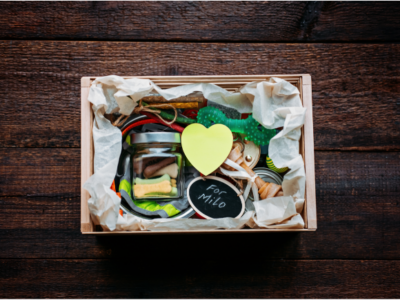Relocation is one of the most challenging tasks you can take on. Not only does it uproot your life, but the actual act of moving and packing can be time-consuming and intimidating. In addition, juggling a variety of responsibilities isn’t easy. However, with the appropriate organizational skills, it’s possible.
Storing And Organizing 101
Do you want to learn how to pack and relocate quickly? Are you looking for travel tips to help make your trip more enjoyable and stress-free? If it’s the case, a few of the moving tips below may assist you in refining your strategy.
1. Begin packing immediately.
The quantity of things heavily influences the time required to pack all of your belongings, so it’s better to begin the packing process earlier. Two months should be sufficient if you fill one box per day for a large home. For smaller households, one month should suffice. Naturally, no precise figure is available, but the point is clear.
2. Consider the benefits of utilizing the services of a licensed moving company.
Having professional movers may make sense in the US if you don’t have willing family or friends to help you relocate cross-state from the northwest, for instance. The amount of work they save you during this trying time may be well worth the added expense. As such, you can easily find professional movers in Northern Idaho if you plan to move from there to a farther city.
Hiring experienced movers can be a pleasurable experience if you choose the right company. However, until you have signed a contract, don’t be afraid to ask questions. Your diligence will instill confidence in you as the day of the move approaches.
3. Distribute notices about your moving plans.
Make a list of all individuals who may be interested in learning about your relocation, and tie numerous loose ends before relocating. You should include a schedule for when and how you’ll complete these tasks on your moving checklist.
For example, visit local offices or be prepared to make a few phone calls when the opportunity presents itself. By compiling this list in advance and scheduling the job on your calendar, you can eliminate the possibility of missing important deliverables.
4. Donate things and declutter your home.
If you can’t bring everything, consider hosting a yard sale or donating your unwanted items to charity. Inquire whether any friends who are assisting you with the transfer require anything you intend to sell. After all, you aren’t compensating them for their difficulties.
Before or after the relocation, make a list of all furniture, clothing, grow lights, and other household items you wish to declutter and donate. Once the list is complete, decide where you want to donate the items. After donating your goods, you can obtain tax-deductible donation receipts. Keep these receipts in your moving binder with your itemized list of donated items to avoid losing them.
5. Create a comprehensive inventory list.
These are particularly advantageous if you possess a sizable collection of books, CDs, or trinkets. Simply labeling your moving boxes ‘Books’ is acceptable. However, if you have a group of specialized items not centralized, it’s recommended to create exhaustive inventory lists. By printing and adhering copies of the spreadsheets to each box in this manner, you can have them on your phone.
As you pack, make notes of the contents to help you keep track of your belongings and locate the following transfer. A popular technique is to number each box and then create itemized lists for each box. Additionally, these can be attached to the outside or inside of the boxes via tape.
6. Pack by room.
It’s a critical tip being unnoticed frequently since it’s debatable whether you can organize your belongings by room or by category. Whichever option suits you best is entirely up to you, but it’s recommended to compartmentalize your possessions. It’ll assist you in remaining organized and it’ll also serve as a reminder to the movers or anyone else helping with the unloading of boxes regarding their proper placement.
Furthermore, you can unload and unpack your belongings in reverse order, starting at the top and working your way down. Begin with the non-breakable items and work your way through the remaining ones. It’ll also alleviate unnecessary strain on your muscles as you’ll almost certainly be too exhausted after the moving period to climb stairs with additional objects.
7. Begin with the least used rooms and items.
For instance, if you have a loft, you can start with the rooms on the top floor and work your way down. Garden tools, hats, and holiday lights are all excellent examples of first-packing items. Sorting through previously packed stuff simplifies separating the boxes to accompany you from those sold or given away.
8. Don’t exceed the weight limit of 30 pounds per box.

Full length of young male movers carrying sofa outside truck on street
It’s critical if you’re moving internationally as additional moving boxes will almost certainly be required. You run the risk of injuring your back or collapsing one of the boxes during the transfer, so larger boxes should be filled with lighter items while smaller boxes should be filled with heavier items. Simply following this packing tip will result in significant time and effort savings.
9. Use plastic bags for spillable items.
Toiletries and detergents should be kept to a minimum. Select a sturdy box and several plastic bags, and caps on bottles should be removed. Following this, secure each bottle’s neck with a plastic bag and replace the caps; the entire bottle should theoretically fit inside the plastic bag. Bind or zip the bag shut with scotch packing tape, and if the bottle is opened accidentally, the contents will remain contained within the plastic bag.
10. Bring all necessary documentation.
Birth certificates, visas, and bank accounts are all examples of these records. Combine all of your documents into one package and load them into your car. If you run a home business or a private practice, a specialist removals company’s packing and office removal services may be beneficial. Bear in mind, the vast majority of these programs are insurance-covered.
11. Keep track of the contact information for all utility providers.
Will you be required to terminate or modify your services as a result of your relocation? Compile a list of all monthly service providers’ contact information to ensure all utility information is kept organized. Utilities include cable and internet, water and sewer, gas, electricity, satellite, surveillance system, garbage, and phone. It’s best to keep a list of contact information in your moving binder once you’ve compiled it. This page contains details on relocating your services.
12. Use ties to store cords.
You’re probably familiar with how tangled cords can become if you’ve ever moved electronics. Organizing and labeling all lines before packing is essential unless you enjoy wasting hours untangling various cords. To accomplish this, wrap and secure each cable with a twist-tie. Then using a sharpie marker, label the wrapped cord with the name of the electronic device to which it belongs.
13. Securely tape all of your moving boxes.
Seal the bottom and top seams with pieces of tape, then wrap the adhesive completely around the box’s top and bottom sides where tension is concentrated.
14. Inquire about special crating if you’re shipping valuable artwork.
Recognize proper packing techniques for artwork to ensure its security during a move. Oil paintings should never be wrapped in regular paper because they’ll stick to them. While packing photographs for relocation, create an ‘X’ across the glass with masking tape to reinforce it and keep it intact if it shatters. Once the images have been wrapped in paper or bubble wrap, they should be placed in a frame box with each framed piece sandwiched between two pieces of cardboard for added protection.
15. When preparing the kitchen for a move, take extra precautions.
Kitchen packaging necessitates a wide variety of products. When moving, wrap each dish in multiple layers of packing paper, then use additional layers to contain five or six dishes together. The containers must be placed on their sides to be packed. Additionally, use a large amount of bunched-up paper to cushion the top and bottom.
When glasses and dishes are stacked on top of one another, they can be divided into three or four sections, and each section can then be wrapped in three or four individual packages of paper. Both of these dishes should be served in dish-barrel-shaped containers. When relocating glasses, use cardboard dividers to protect them, and wrap them in paper.
16. Prepare a supply package for the day of the move.

Happy young woman moving to new home – having fun
Finally, don’t forget to pack your moving day essentials in a box or suitcase. Without it, your relocation may be less than pleasant. Second, create a list of all the items you’ll need on moving day. If you follow this procedure, you’ll avoid missing a critical assignment at the last minute.
Essentials include medication, toiletries, an extra set of clothing, identification and credit cards, vital documents, baby essentials, paper towels, toilet paper, garbage bags, a tool kit, pet essentials, and bottled water.
Takeaway
You need to be precisely ready for a move, so to avoid forgetting tasks and belongings, use the guide above to help you pack and organize. Be wise on packing belongings and know what or what not to bring to your brand-new home.










[…] doesn’t have to be overwhelming. Although there is a lot of time involved in packing up a home and moving to a new one, with caution and planning, you can easily move from one place to the next […]
[…] soon as you arrive, give yourself a break from all of the unpacking then go ahead and explore the city. Walk around and take time to breathe in the surroundings. The […]